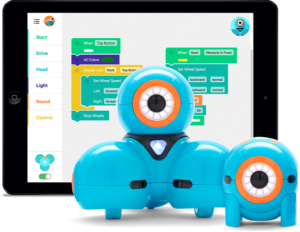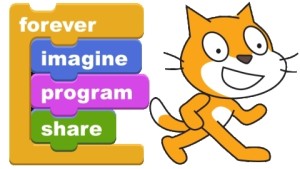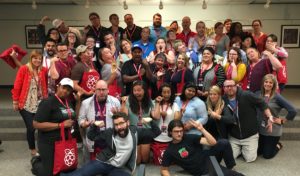 Last Thursday and Friday I had the incredible opportunity to participate in a training session called Picademy. For those who have not heard of Picademy, it is the Raspberry Pi Foundation’s free face-to-face training program that aims to support educators throughout their digital making and computing journey.
Last Thursday and Friday I had the incredible opportunity to participate in a training session called Picademy. For those who have not heard of Picademy, it is the Raspberry Pi Foundation’s free face-to-face training program that aims to support educators throughout their digital making and computing journey.
If you have not heard of a Raspberry Pi you must have been living under a rock for the past 5+ years. The Raspberry Pi is a credit card sized computer that costs $35. (You still have to provide a micro SD card, power plug, keyboard, mouse and monitor.)(If you run the Raspberry Pi headless [without a monitor using another computer to run using VNC], you don’t need the keyboard, mouse or monitor.) It is a fully functional computer running a version of Linux called Raspbian.
During the two days of the Picademy we were trained on using the Raspberry Pi. The training focused on digital making utilizing the Pi as a tool or material in the project we were making. I’m not sure if you caught what I just said. The Pi computer is just one of the many materials we used in our digital making.
Too often in schools we use technology to be able to say we used technology. We assign digital worksheets and call it technology integration. We spend thousands of dollars on 1:1 initiatives only to have students completing the same types of assignments as before.
Digital making utilizes many materials and the Pi or other tech device is just one of the materials required to build the project. What is essential to digital making is student choice. Giving the students the choice of what to build. The Picademy facilitators gave us a choice in what project we wanted to create. We all brainstormed ideas. There were many ideas, most of which were a solution to a problem or a need in our various schools, classrooms and maker spaces. One of my favorites was the exit ticket machine. The group created a program and a graphical user interface (GUI) to ask students a question. The students stepped up to the machine and pressed a button that corresponded with their answer. It tallied the results for the teacher to quickly collect.
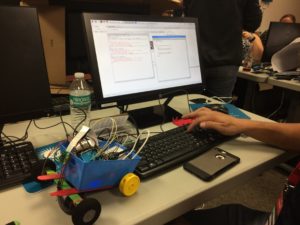 My group started with my idea in building a robot. I wanted to see if we could build a low cost robot that would be affordable to my students. The PiRover is pictured to the left. I had a need and my group worked to find a solution to the need.
My group started with my idea in building a robot. I wanted to see if we could build a low cost robot that would be affordable to my students. The PiRover is pictured to the left. I had a need and my group worked to find a solution to the need.
Digital making is about students (not teachers) coming up with a solution to a problem or need and creating the solution. This is real world problem solving. The learning potential in digital making is massive.
The proof of potential learning is that every single team at the Picademy built something they had not built before. We all had to spend the 2 and a half hours learning. We had to find the information we needed to complete our projects. The facilitators were there for help, just like we are for our students. There were times that the facilitators did not have the answer. They only had suggestions or hits that might work or might lead us to our solution.
In addition to learning and practicing digital making, we were encouraged and given permission to fail. That isn’t something you usually hear. I tell my robotics students on the first day of class that they will fail more times that they will succeed. That is part of life. Think about how many inventors failed over and over again before the invention worked.
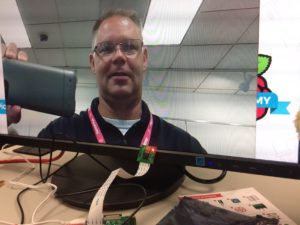 Overall, Picademy invited us to take on a maker mindset. Digital making requires a shift in how we teach. It changes the our role as teacher and the student’s role in learning. This maker mindset is where real world collides with the educational institution.
Overall, Picademy invited us to take on a maker mindset. Digital making requires a shift in how we teach. It changes the our role as teacher and the student’s role in learning. This maker mindset is where real world collides with the educational institution.
I guess what I am saying is Picademy was life changing. Life changing for me, my students and those who I can drag along with me.
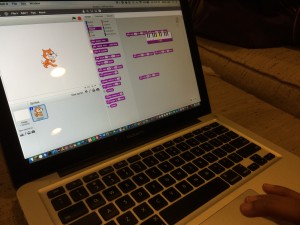 I recently got the Makey Makey out of the drawer to teach my 8 year old how to program using Scratch. She has had some experience using Blockly with her Dash robot by Wonder Workshop. She has also used Scratch Jr. for the iPad, but this is the first time programming for herself.
I recently got the Makey Makey out of the drawer to teach my 8 year old how to program using Scratch. She has had some experience using Blockly with her Dash robot by Wonder Workshop. She has also used Scratch Jr. for the iPad, but this is the first time programming for herself.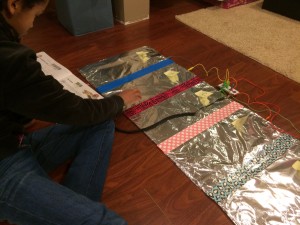 When using the Makey Makey, you have to connect yourself to complete the circuit. This gave us the opportunity to talk about electrical circuits and why our large piano works.
When using the Makey Makey, you have to connect yourself to complete the circuit. This gave us the opportunity to talk about electrical circuits and why our large piano works.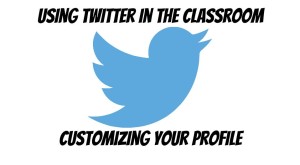 I hope you checked out the last post on using Twitter in your classroom. If you watched, I hope you set up your account. You are on your way to being well connected with others. It is time to customize your account to give it an unique look that lets others know who is behind the account. Customizing doesn’t take that long. Take a look at the next video in the Twitter in the Classroom series.
I hope you checked out the last post on using Twitter in your classroom. If you watched, I hope you set up your account. You are on your way to being well connected with others. It is time to customize your account to give it an unique look that lets others know who is behind the account. Customizing doesn’t take that long. Take a look at the next video in the Twitter in the Classroom series.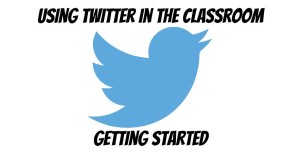 In our twenty-first century world, it is easier than ever to connect with other educators from around the world. There are still some teachers who don’t see the value in expanding their Professional Learning Network (PLN). I am hoping not only to show you why connecting with teachers outside your school district or surrounding communities is important, but how to grow your PLN as well.
In our twenty-first century world, it is easier than ever to connect with other educators from around the world. There are still some teachers who don’t see the value in expanding their Professional Learning Network (PLN). I am hoping not only to show you why connecting with teachers outside your school district or surrounding communities is important, but how to grow your PLN as well.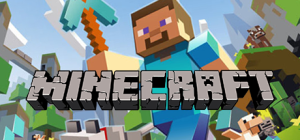 Back in April I posted about using Minecraft in the classroom.
Back in April I posted about using Minecraft in the classroom. 